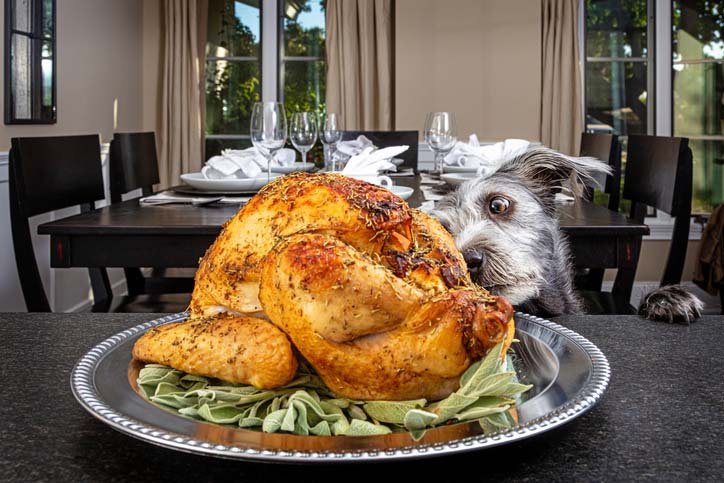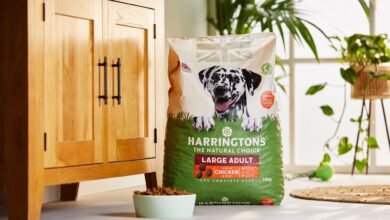
Canned dog food is a convenient and nutritious option for feeding your furry friend. It provides a balanced diet packed with essential nutrients for your dog’s overall health.
Additionally, canned dog food is easy to serve and can be stored for a long time, making it a popular choice among pet owners. By opting for canned dog food, you ensure that your dog receives the necessary nutrients to thrive and maintain a healthy lifestyle.
We will explore the benefits of canned dog food, discuss its ingredients, and provide tips for selecting the right brand for your pet. So, let’s dive in and learn more about this wholesome option for your pup’s diet.
**Understanding the Benefits Of Canned Dog Food**
wp:paragraph
Understanding the Benefits of Canned Dog Food
/wp:paragraph
wp:heading
Nutritional Advantages Of Canned Dog Food
/wp:heading
wp:paragraph
When it comes to choosing the best diet for your canine companion, canned dog food offers a range of nutritional advantages that can greatly benefit their overall health and well-being. Unlike dry kibble, canned dog food is packed with essential nutrients and vitamins, making it an excellent choice for dogs of all ages and sizes. From puppies in their developmental stages to adult dogs maintaining their vitality, the nutritional profile of canned dog food ensures they receive a wholesome and balanced diet.
/wp:paragraph
wp:heading
Higher Moisture Content
/wp:heading
wp:paragraph
One of the key benefits of canned dog food is its higher moisture content. Unlike dry kibble, which can sometimes lack moisture and result in dehydration, canned dog food provides the necessary hydration to keep your furry friend properly hydrated throughout the day. This higher moisture content can be particularly beneficial for dogs who are prone to urinary tract issues or those who may not drink enough water on their own. Additionally, the increased moisture content in canned dog food helps promote healthy digestion and can prevent issues such as constipation.
/wp:paragraph
wp:heading
Fresh And High-quality Ingredients
/wp:heading
wp:paragraph
When it comes to the ingredients used in canned dog food, quality matters. Many reputable brands of canned dog food prioritize using fresh and high-quality ingredients in their recipes. These brands understand the importance of providing dogs with a diet that closely resembles their natural and ancestral eating habits. The use of fresh meats, vegetables, and fruits ensures that your pup is getting the necessary proteins, vitamins, and minerals to thrive. By opting for canned dog food made with wholesome ingredients, you can be confident that you are providing your furry friend with the best possible nutrition.
/wp:paragraph
wp:heading
Enhanced Palatability And Digestibility
/wp:heading
wp:paragraph
Ensuring that your dog enjoys their meals is crucial for their overall health and well-being. Canned dog food offers enhanced palatability, which means that it is usually more appealing to dogs and can entice even the pickiest of eaters. The texture and aroma of canned dog food make it a flavorful and enjoyable meal option for your furry friend. In addition to its palatability, canned dog food also tends to be more easily digestible compared to dry kibble. The moisture content and softer texture make it gentler on the digestive system, reducing the risk of upset stomachs and other gastrointestinal issues.
/wp:paragraph

Credit: www.prettyfluffy.com
**Choosing the Right Canned Dog Food For Your Pet**
When it comes to providing the best nutrition for your furry friend, choosing the right canned dog food is crucial. With so many options available on the market, it can be overwhelming to make the right choice. However, by assessing your dog’s dietary needs, considering age and life stage, breed and size-specific requirements, as well as any special dietary restrictions or allergies, you can ensure that you are providing the optimal nutrition for your pet.
Assessing Your Dog’s Dietary Needs
Before diving into the world of canned dog food, it’s important to assess your dog’s dietary needs. Every dog is unique, and their nutritional requirements can vary based on factors such as age, activity level, and overall health. By understanding your dog’s specific needs, you can make an informed decision when it comes to choosing the right canned food.
Age And Life Stage Considerations
Age plays a vital role in determining the nutritional needs of your dog. Puppies, adult dogs, and seniors all have different requirements. Puppies need diets that support their growth and development, while adult dogs require a balanced diet to maintain their optimal health. Senior dogs may benefit from formulas that cater to their specific needs, such as joint support or reduced calorie content.
Breed And Size-specific Requirements
The breed and size of your dog also play a significant role in selecting the right canned food. Large breed dogs may require formulas that support their joint health, while small breed dogs may have higher energy needs. Certain breeds may also have specific dietary considerations, such as food sensitivities.
Special Dietary Restrictions Or Allergies
If your dog has any special dietary restrictions or allergies, it’s crucial to choose canned food that meets their specific needs. Some dogs may require grain-free options, while others may have sensitivity to common protein sources like chicken or beef. By identifying your dog’s specific dietary restrictions or allergies, you can select canned food that avoids potential triggers.
Evaluating Ingredient Lists
When choosing canned dog food, it’s important to evaluate the ingredient list. Look for real, high-quality ingredients such as whole meats, fruits, and vegetables. Avoid products that contain artificial preservatives, fillers, or by-products. By choosing a canned food with quality ingredients, you can ensure that your dog receives essential nutrients for optimal health.
Identifying Essential Nutrients
Essential nutrients play a vital role in supporting your dog’s overall health and well-being. Look for canned dog food that contains a balanced blend of proteins, fats, carbohydrates, vitamins, and minerals. Proteins like chicken, beef, fish, or lamb provide the necessary amino acids, while fats serve as a source of energy. Carbohydrates from sources such as sweet potatoes or brown rice can provide fiber and essential nutrients.
Avoiding Artificial Preservatives And Fillers
While some canned dog foods may contain artificial preservatives and fillers, it’s best to avoid them. These additives can be detrimental to your dog’s health and may contribute to allergies, digestive issues, or obesity. Choose canned food that is free from artificial preservatives like BHA, BHT, and ethoxyquin, as well as fillers like corn, wheat, and soy.
Recognizing Potential Allergens
Dogs, like humans, can develop food allergies or sensitivities. Common allergens in pet food include beef, chicken, dairy, and grains. If your dog shows signs of allergies such as skin irritation, digestive problems, or recurrent ear infections, consider choosing canned dog food that is formulated without these potential allergens.
Decoding Labels And Certifications
Reading and understanding pet food labels can be challenging, but it’s worth the effort. Labels provide valuable information about the ingredients, guaranteed analysis, and feeding instructions. Look for labels that adhere to reputable certifications, as they indicate that the product meets certain quality standards.
Recognizing Reputable Certifications
Reputable certifications can provide reassurance that the canned dog food meets high-quality standards. Look for certifications such as AAFCO (Association of American Feed Control Officials), which ensures that the product is nutritionally complete and balanced for a specific life stage. Other certifications like USDA Organic or non-GMO project verified can also provide peace of mind for pet owners who prioritize organic or non-genetically modified ingredients.
Differentiating Between Marketing Claims And Facts
Marketing claims on pet food packaging can be enticing, but it’s essential to differentiate between claims and facts. Phrases like “natural,” “grain-free,” or “premium” may not always reflect the true nutritional value of the product. Focus on the ingredient list and guaranteed analysis to make an informed decision based on facts rather than marketing claims.
Choosing the right canned dog food for your pet requires careful consideration of their dietary needs, age, breed, and any special requirements or allergies they may have. By evaluating ingredient lists, identifying essential nutrients, recognizing potential allergens, decoding labels, and certifications, and differentiating between marketing claims and facts, you can ensure that you are providing your pet with the best nutrition possible.
**Transitioning to Canned Dog Food: A Seamless Process**
Transitioning your dog’s diet to canned food can be a smooth and seamless process with a few simple steps. Whether you’re making the switch for health reasons or just to give your furry friend some variation in their meals, it’s important to approach the transition gradually and monitor your dog’s response. By taking these steps, you can ensure a successful transition without any digestive issues or reluctance from your furry companion.
Gradual Introduction Of New Diet
When introducing canned dog food into your pet’s diet, it’s best to do so gradually over some time. Start by mixing a small amount of canned food with their current diet, gradually increasing the portion size of the canned food over a week or two. This slow transition allows your dog’s digestive system to adjust to the new food, reducing the chances of any stomach upset.
Mixing Canned Food With Current Diet
To ease the transition, it’s advisable to mix the canned food with your dog’s current diet. This allows your dog to become familiar with the new taste and texture without completely abandoning their familiar meal. Gradually increase the amount of canned food while reducing the proportion of the previous diet until your dog is solely on canned dog food.
Adjusting Portion Sizes For Balanced Nutrition
It’s important to adjust the portion sizes of the new canned dog food to maintain a balanced diet for your furry friend. Take into account the feeding guidelines on the packaging, as these provide recommended portion sizes based on your dog’s weight. Make sure to divide the daily recommended amount into two or three meals to support proper digestion and prevent overeating.
Monitoring Any Digestive Changes
During the transition process, closely monitor your dog’s digestive system for any changes. Keep an eye out for any signs of upset stomach, such as diarrhea or vomiting. Should you notice any digestive issues, slow down the transition process and consult with your veterinarian for further guidance.
Overcoming Potential Challenges
Sometimes, dog owners may encounter challenges during the transition to canned food. One common challenge is picky eaters who may refuse to eat the new food. In such cases, you can try different flavors and varieties to entice their palate. Additionally, warming the canned food slightly or mixing in some low-sodium broth can make it more appealing. Remember to avoid adding seasonings or additives that may be harmful to your dog’s health.
Picky Eaters And Flavor Preferences
Different dogs have different taste preferences, much like humans. If your furry friend seems picky or uninterested in the new canned food, consider offering a variety of flavors to find the one that they enjoy the most. It may take some trial and error, but finding the right flavor can make the transition easier and more enjoyable for your dog.
Addressing Concerns About Weight Gain
Some dog owners worry that switching to canned food may result in weight gain. However, it’s important to note that canned dog food can help with weight management. Canned food provides proper portion control and is often more nutritionally balanced compared to some dry kibbles. Additionally, you can consult your veterinarian on the right feeding portions to ensure your dog maintains a healthy weight.
Managing Dietary Sensitivities Or Intolerances
If your dog has dietary sensitivities or intolerances, switching to canned dog food can be a great option. Canned food often contains fewer additives and fillers, which can be the cause of sensitivities. However, it’s important to read the labels and choose a canned dog food that suits your dog’s specific dietary needs. If you notice any adverse reactions, such as itching or discomfort, consult your veterinarian to explore alternative options.
**Feeding Guidelines And Meal Planning For Optimal Health**
Feeding your furry friend a nutritious and well-balanced diet is essential for their overall health and well-being. When it comes to canned dog food, it’s important to establish feeding guidelines and a meal plan that promotes optimal health. In this article, we will discuss key aspects of feeding guidelines, including determining proper portions, calculating recommended calories, establishing a feeding schedule, adjusting portion sizes, and supplementing with fresh ingredients. Let’s dive in!
Determining Proper Portions For Your Dog
To ensure your dog receives the right amount of food, it’s crucial to determine proper portions. Portion sizes vary based on factors like breed, age, and overall health. You can use the following formula to calculate your dog’s daily caloric needs:
Calculating Recommended Calories Based On Weight And Activity Level
Caloric needs (kcal/day) = (Weight in kg) x (Resting Energy Requirement (RER))
Resting Energy Requirement (RER) depends on your dog’s activity level:
- Sedentary: For dogs who have limited physical activity or are overweight, use RER x 1.2.
- Normal: For regularly active dogs, use RER x 1.5.
- Active: For highly active dogs, use RER x 2.0.
Once you’ve calculated the daily caloric needs, you can divide it into smaller meals throughout the day to establish a feeding schedule.
Establishing A Feeding Schedule
A regular feeding schedule helps maintain your dog’s digestive system and prevents overeating. Divide the calculated daily calories into two or three meals, depending on your dog’s preference and schedule. Stick to the same time each day to provide stability and routine for your furry companion.
Adjusting Portion Sizes As Needed
Monitoring your dog’s weight and body condition is crucial for determining if portion sizes need adjustment. If your dog is gaining weight, you may need to decrease the portions slightly. On the other hand, if your dog is losing weight or appears thin, increasing the portion sizes can help. Regularly consult with your veterinarian for guidance on adjusting portion sizes based on your dog’s individual needs.
Supplementing With Fresh Ingredients
While canned dog food provides essential nutrients, supplementing their meals with fresh ingredients can add additional health benefits. Consider adding small amounts of fresh fruits and vegetables to their diet. Carrots, blueberries, spinach, and sweet potatoes are all excellent choices! Just remember to introduce new ingredients gradually and avoid any that may be harmful or toxic.
Incorporating Fruits And Vegetables
Here are some fruits and vegetables that can be included in your dog’s diet:
| Fruits | Vegetables |
|---|---|
| Berries (blueberries, strawberries) | Carrots |
| Apples (remove seeds and core) | Spinach |
| Bananas | Pumpkin |
Remember to wash fruits and vegetables thoroughly, remove any skin, seeds, or pits that may be harmful, and chop them into manageable pieces before serving.
Including Sources Of Lean Protein And Healthy Fats
Lean protein is essential for your dog’s muscle development and overall health. Opt for canned dog food that contains quality sources of lean protein like chicken, turkey, or fish. Healthy fats, such as omega-3 fatty acids, promote a shiny coat and help with cognitive function. Look for canned dog food that incorporates ingredients like salmon or flaxseed oil.
Avoiding Harmful Or Toxic Foods
Certain foods can be harmful or toxic to dogs and should be avoided. These include chocolate, grapes, raisins, onions, garlic, caffeine, alcohol, and artificial sweeteners like xylitol. Ensure that the canned dog food you choose doesn’t contain any harmful ingredients that could jeopardize your pet’s health.
By following these feeding guidelines and incorporating a well-planned meal strategy, you can provide optimal nutrition for your furry friend, promoting their overall health and longevity.
**Monitoring and Optimizing Your Dog’s Health**
Ensuring your dog’s health and well-being is an ongoing responsibility of being a pet parent. One essential aspect of this is monitoring and optimizing your dog’s health. By keeping a close eye on various factors, you can ensure that your furry friend is receiving the proper nutrition and is thriving in every way.
Regular Veterinary Check-ups And Screenings
Regular veterinary check-ups and screenings are vital for maintaining your dog’s overall health. These visits allow the veterinarian to assess any potential health issues and catch them early on. During these appointments, your vet will perform comprehensive examinations, including assessing your dog’s weight, body condition, and vital signs. Additionally, they may recommend various screenings, such as blood tests, to monitor organ function and identify potential health concerns.
Assessing Overall Health And Dietary Impact
Assessing your dog’s overall health and the impact of their diet is crucial for optimizing their well-being. By closely observing your dog’s behavior and appearance, you can gain insights into how their diet is affecting them. Look for signs such as changes in energy levels, coat condition, and overall vitality. If you notice any significant changes or concerns, consult with your veterinarian to determine if adjustments to your diet may be necessary.
Identifying Potential Allergies Or Sensitivities
Just like humans, dogs can develop allergies or sensitivities to certain foods. These allergies can manifest in various ways, such as skin irritations, digestive issues, or respiratory problems. By monitoring your dog’s health, you can identify any potential allergies or sensitivities. Pay close attention to any adverse reactions your dog may have after consuming specific ingredients or food types. If you suspect an allergy or sensitivity, consult with your veterinarian to establish an appropriate diet plan.
Tracking Weight And Body Condition
Tracking your dog’s weight and body condition is an important part of ensuring their overall health. Regularly weigh your dog and monitor their body condition score, which assesses their level of body fat and muscle tone. This information provides valuable insights into their overall health and can help them make informed decisions about their diet and exercise regimen.
Observing Changes In Behavior And Appearance
Changes in your dog’s behavior and appearance can be indicative of their overall health and well-being. Pay attention to any changes in their appetite, water consumption, activity levels, or general demeanor. Additionally, observe any alterations in their physical appearance, such as changes in their coat texture or any abnormal growths. If you notice any concerning changes, consult with your veterinarian for further evaluation.
Recognizing Signs Of Food Intolerance Or Allergies
Food intolerance or allergies can cause a range of symptoms in dogs, including gastrointestinal issues, skin problems, and chronic ear infections. By monitoring your dog’s health, you can recognize the signs of food intolerance or allergies. Keep an eye out for symptoms such as vomiting, diarrhea, excessive itching, or ear infections. If you suspect a food intolerance or allergy, work with your veterinarian to determine the appropriate dietary adjustments or elimination trials.
Monitoring Digestion And Stool Quality
Monitoring your dog’s digestion and stool quality is an essential part of their overall health assessment. Pay attention to the consistency, color, and frequency of their stools. Healthy digestion should result in well-formed and easy-to-pass stools. Any significant changes, such as diarrhea, constipation, or bloody stools, should prompt a conversation with your veterinarian to investigate the underlying cause.
Noticing Improvements In Coat Condition And Energy Levels
Diet plays a significant role in your dog’s coat condition and energy levels. By monitoring these aspects, you can gauge the impact of their diet on their overall well-being. Notice any improvements in their coat, such as increased shine, reduced shedding, or healthier skin. Additionally, observe any positive changes in their energy levels and overall activity levels. These improvements can indicate that their nutrition is being optimized and that they are thriving.
Frequently Asked Questions About Canned Dog Food
Can Dogs Eat Canned Dog Food Every Day?
Yes, dogs can eat canned dog food every day. However, it’s important to choose a high-quality brand that meets their nutritional needs. Look for formulas with real meat as the first ingredient and avoid those with fillers or artificial additives.
How Much Canned Dog Food Should I Feed My Dog?
The amount of canned dog food to feed your dog depends on their size, age, and activity level. As a general guideline, divide their daily food portion into two or three meals. Start with the recommended serving size on the can and adjust accordingly based on their weight and condition.
Is Canned Dog Food Better Than Dry Food?
Canned dog food has several advantages over dry food. It typically has a higher water content, making it more hydrating for dogs. It also tends to be more flavorful and appealing to picky eaters. However, both canned and dry dog food can be nutritionally balanced if they meet the recommended guidelines.
Conclusion
To sum up, canned dog food offers a convenient and nutritious option for our furry friends. With a wide variety of flavors and dietary options available, it ensures that dogs receive a balanced diet. Moreover, the ease of storage and preparation makes it a popular choice for pet parents.
Whether you are looking to cater to specific dietary needs or simply offer a convenient meal, canned dog food is a reliable and practical choice. Make sure to choose reputable brands that prioritize the health and well-being of your four-legged companion.



